Last weekend’s high winds and several days of intermittent rain have stripped many of the trees of their leaves. The understory continues to thin, making it easier to find the sparrows and thrushes that are foraging there. Underfoot, the paths through Wild Goose and Victoria woods are completely leaf covered; the boardwalks too, making them slippery after the overnight rainfall.
Dry, windy, blue-sky-with-clouds days are exhilarating. Leaves swirl to the ground, pirouetting and reversing, showing off their colours like the skirts of flamenco dancers. Branches sway. Birds seem to be blown along, or, like the crows, revel and play in the wind.
I’m looking for evidence of a property boundary in Wild Goose Woods, but without luck. But when I return to the house and the computer, it’s easy to see why: when I overlay the old map and the new, I can see I’ve been looking in the wrong place. (Because an old farmhouse is on both maps, I can do an accurate overlay.) The next time I go, I’ll know where to look for a row of older trees, or a slight rise where a fenceline used to be.
Speaking with a friend about this project, he reminded me of William Least Heat Moon’s book PrairyErth and the concept of ‘deep mapping’. “That’s what you’re doing,” he said, and he’s largely right, I think. I’m going to reread the book; it’s been years, but it was one of those books, like Annie Dillard’s Pilgrim at Tinker Creek, that strongly influenced my relationship with place and landscape. It’s not on my bookshelf, though: I must have lent it to someone. (Ah well, at least my local indie bookstore has it available!)
I’m noticing wasps’ nests now; they hang from branches like weaverbird or oriole nests, but solid. I can’t reliably determine what wasp species has built the ones I’m seeing, but it’s likely the bald-faced hornet, Dolichovespula maculata (which, regardless of its common name, is actually a wasp, not a hornet.) They’re another part of the Arboretum’s ecosystem that’s essentially hidden in the summer. By now, here in southern Ontario, the colonies that built these nests are gone, all dead after a summer’s labour except a fertilized queen that’s overwintering somewhere protected: a rock pile, or under bark, leaving the nest to hang like a forgotten ornament and slowly decompose.
Wild Goose Woods looks like a consistent ecosystem, but at this time of year the microclimates within it reveal themselves. For some distance east of the maple swamp boardwalk, the undergrowth is stripped down now, as are the trees. Then the land dips a very little, just enough to be slightly damper, and the understory is still green, the trees holding more of their leaves. (In the photo below, note the difference between the foreground and the distant trees.)
The path rises again, almost imperceptibly, and it’s back to barer stems and branches. Other than the yelp of red-breasted nuthatches the woods are quiet. As the morning warms, more birds begin to move: American robins and cedar waxwings, and an odd mixed feeding flock of chickadees, American goldfinches and white-throated sparrows, all in among bare, lichen-encrusted branches. I’m not sure what they were finding there. Two species are overwinterers; one migratory, so they don’t fit into the cooperative migration strategy Bill Davison wrote about here.
A bit later, on a bare branch rocking in the breeze, one lone bluebird. And then, a flash of rufous among the dark branches of a spruce: a fox sparrow.
The Beaver Pond continues its slow change.
The uncut tree swallow meadow is browner, the trees barer, but here autumn is still putting on a show.
Until next week.
Marian


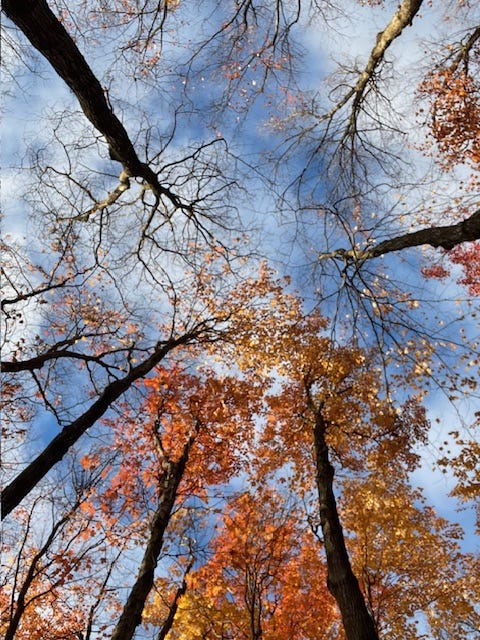


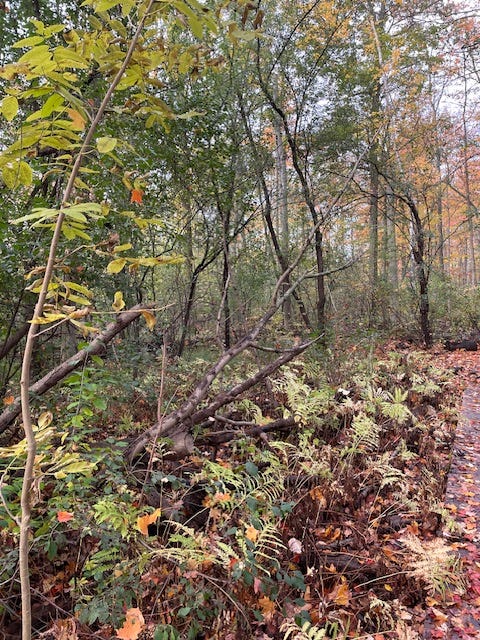
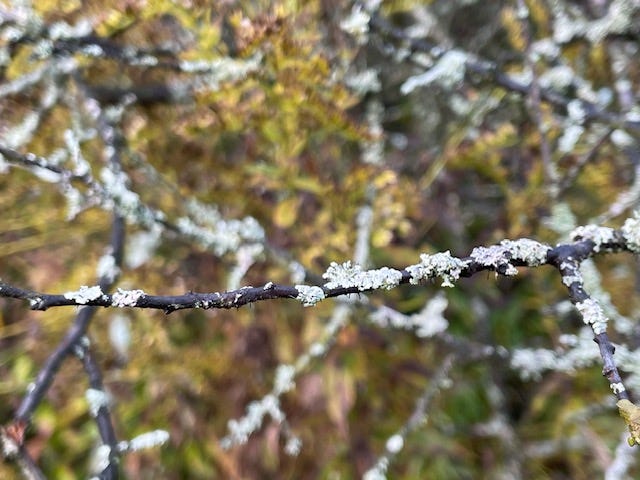
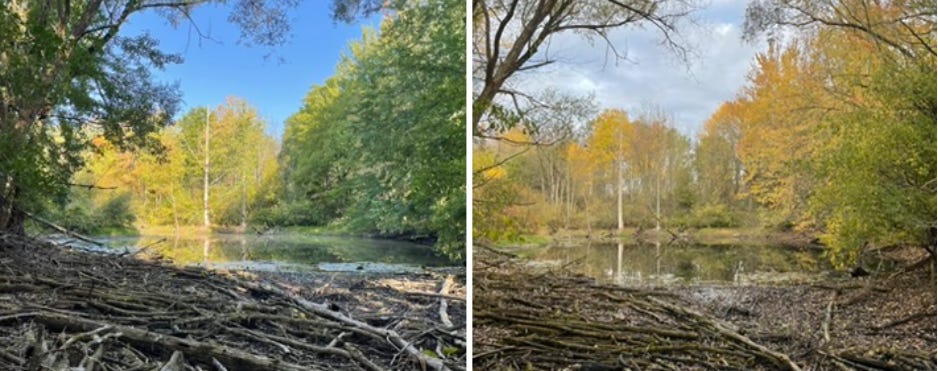
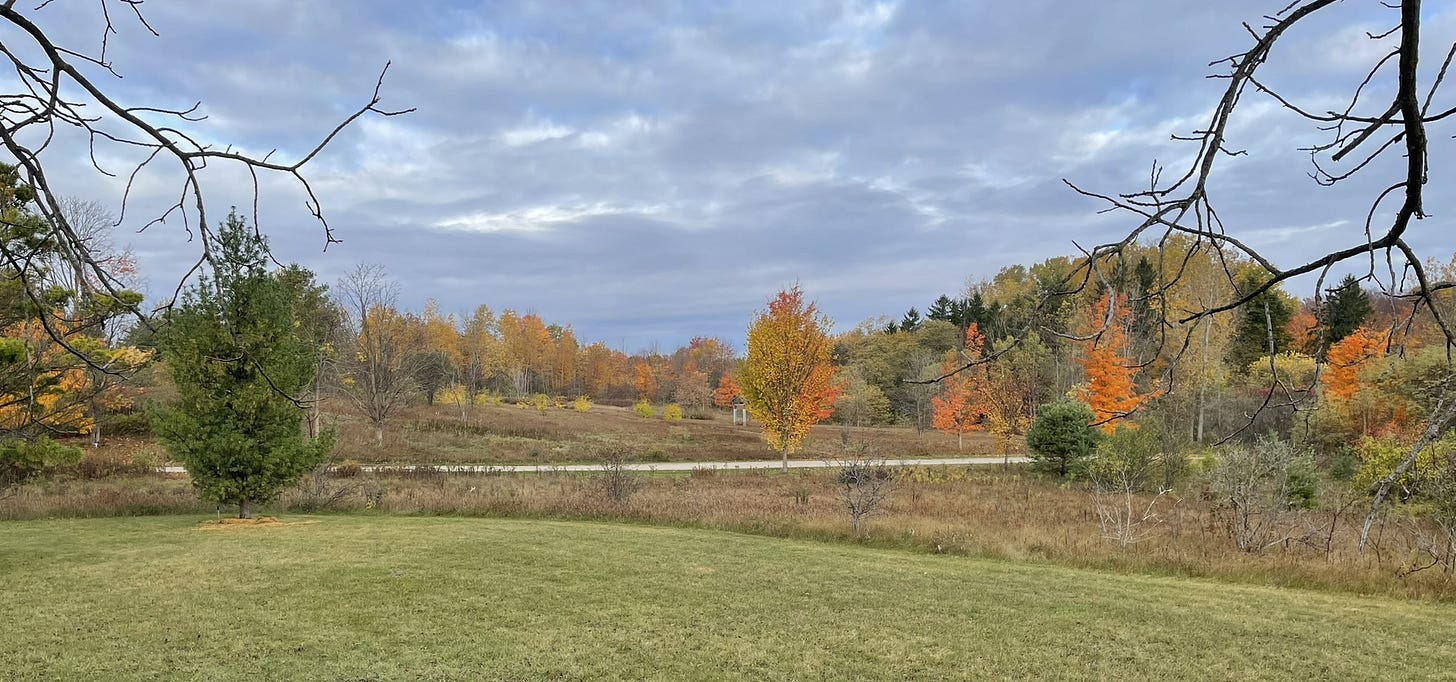
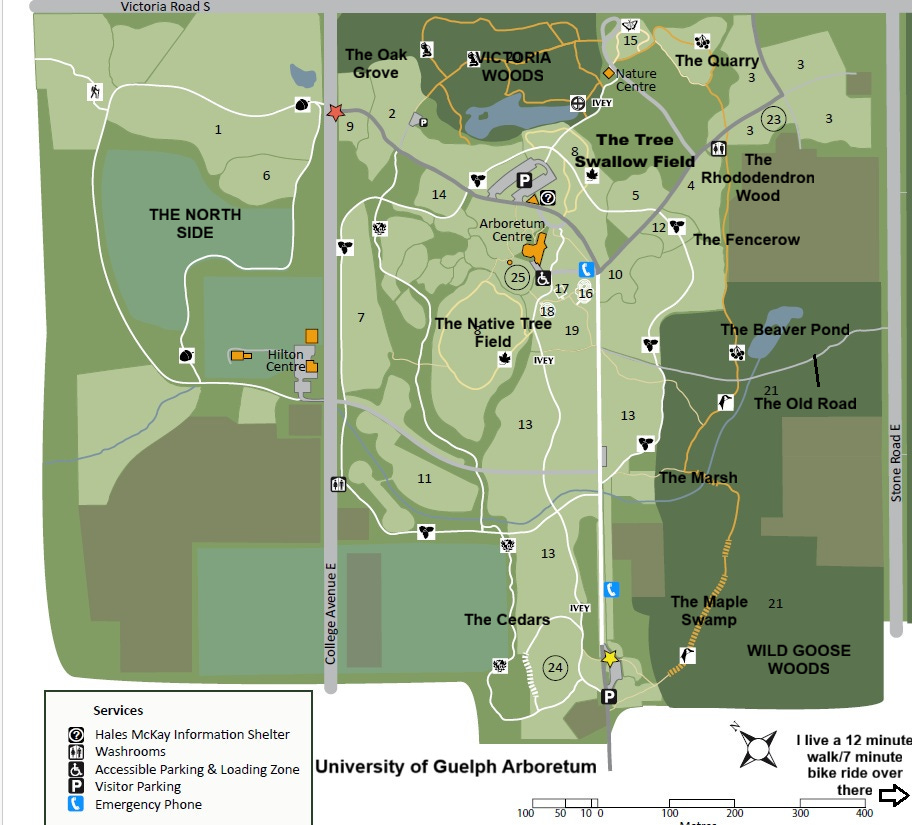
I love our fall/winter mixed flocks. Ours are dominated by the "greys" -- chickadees, titmice, and white-breasted nuthatches, but I also see downy woodpeckers, goldfinches, even an occasional pair of bluebirds tagging along. I was also excited to finally see juncoes last week. I don't know if they were later than usual, or I was just late in seeing them.
Regarding deep mapping, I wonder if you are familiar with Tom Wessels' Forest Forensics. It may be more woodland-oriented to be of full use for you, but perhaps it would be a help in transferring your England-based knowledge to North America? The Michigan extension service does some fall hikes every year applying his principles to areas around the state. Unfortunately, they are usually at inconvenient distances for me.
Loved exploring the area with you. Your writing unearthed all my senses. Thank you for your work and your dedication to our community. Happy hiker